Does one need a recipe for hamachi crudo? Not necessarily, but there are some generally accepted practices you should know about this popular raw fish preparation.

Hamachi crudo is a raw fish preparation that is even simpler than Hawaiian poke. Try other simple fish dishes such as Easy Baked Ling Cod with 3-Ingredient Miso Glaze and Quickie Miso-Mirin Manila Clams.
What is Hamachi?
Hamachi is also known as amberjack or yellowtail. The latter name due to its colored fin and yellow stripe that runs along its body.
Furthermore, its name will vary according to its stage of life.
- Called kanpachi when it reaches maturity.
- Hamachi when it is 6 lbs.
- Buri when it is 10 lbs.
Hamachi is native to the Pacific Ocean and can be caught off the coasts of California, Hawaii, Japan, Korea.
The flavor of hamachi is buttery, dense, oily, rich, and sweet. It can be prepared a number of ways, including cooked, but the raw form is favored by many and a staple of many sushi restaurants.
What is Crudo?
Crudo simply means raw in Italian. Eating fish crudo has a long history for fisherman in Italy as a simple way to prepare the day's catch.
According to Food Republic, crudo is not sashimi because of the additional ingredients added to the fish that highly affect the flavor. These can include:
- FAT - such as high quality extra virgin olive oil, truffle oil, or nut oil
- ACID - such as citrus juice/zest or balsamic vinegar
- SALT - such as a nice sea salt or spice blend
- Other fresh herbs, pepper, flowers, fresh fruit, etc.
Difference between Crudo and Sashimi
Japanese sashimi is also raw fish that is typically served with soy sauce and wasabi. However, there is some debate whether sashimi and crudo are essentially the same.
I tend to agree with the Dana Point Fish Company that sashimi emphasizes the quality of the fish and the care with which it is sliced.
Whether sashimi or crudo, they are both so, so good.
Other Types of Fish Crudo
Other types of fish you could use for crudo are any sashimi grade fish such as:
- tuna
- Dayboat scallops
- striped bass
- arctic char
- snapper
Avoid coldwater fish that may contain parasitic worms such as:
- halibut
- Atlantic cod
- swordfish
Source: Bon Appetit
How to Make Hamachi Crudo
Step 1: Buy fish

This must be the hardest part: sourcing fish you can eat raw. Look for "sashimi grade" or ask the fishmonger if it is ok to consume raw.
The term sashimi grade fish can be nebulous, but generally fish for raw consumption are treated differently on the boat than fish that is to be cooked.
Sometimes you can buy the fillet already cleaned. Other times, it will contain the skin and bones which will have to be cleaned.
Step 2: Clean & slice fish

If you have bought a fillet with skin on, there is some cleaning to do. Definitely remove the skin.
Can you eat the dark red flesh?
As for the dark red flesh, it is edible, and some people do eat it. However, in high end Japanese restaurants, they will always cut this part off because of its metallic, unpleasant flavor.
A lower end restaurant will serve the red flesh, otherwise you end up throwing so much of the fish away.
On a one pound fillet, I probably cut away and discarded a quarter of the weight.

Slice the fish as thinly as you prefer to eat. Arrange on a plate. I like to splay them out on a plate for hamachi carpaccio rather than nesting each slice up against each other.
Step 3: Season fish

Finally, the fun part! You can experiment with different seasonings. I opt for simplicity (and what I already have in the house).
For the hamachi recipe pictured, lightly sprinkle on, in no particular order:
- pink Himalayan salt
- fresh squeezed lime juice
- extra virgin olivArbequina olive oil
- cilantro microgreens
Slice the fish ahead of time
You can slice the fish ahead of time and leave it covered in the refrigerator until ready to serve. Add the seasoning just before serving.
Wine Pairing
Hamachi has a stronger, richer flavor than say snapper or rockfish. I tried this with a bone dry prosecco, and it worked fairly well.
Since crudo is an Italian preparation, I would also try a mineral this with an Italian rosé or Pinot Grigio.
Helpful Tips
- Look for sashimi grade hamachi or ask your fish vendor if the fillet is ok to consume raw.
- Use the highest quality ingredients you can find.
- Use a light touch with the seasonings so as not to overshadow the delicate hamachi flavor.

Related Posts
Legit Hawaiian Poke – No Soy Sauce Necessary
Sushi Yoshizumi – Only 9 Seats and 1 Bright Michelin Star
Morimoto Inspired Manila Clams Recipe
Recipe
Hamachi Crudo
Ingredients
- ½ lb hamachi fillet sashimi grade, aka yellowtail
- ½ ea lime
- extra virgin olive oil
- salt sea salt, mineral salt, fleur de sel
Optional Garnish
- microgreens, edible flowers, sliced fruit, cucumber, radish, etc.
Instructions
- If not already cleaned, remove bones and any dark red flesh from the hamachi fillets.
- Slice thinly as you prefer your raw fish.
- Drizzle with a squeeze of lime juice, olive oil, and salt.
- Garnish as desired and serve.
Do you love raw fish? Spread the ♥, and please share!


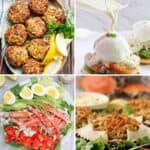
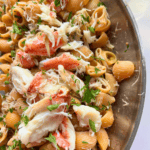

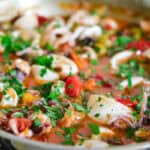
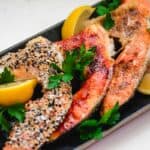
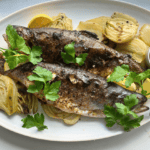
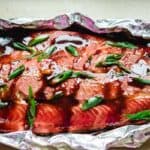







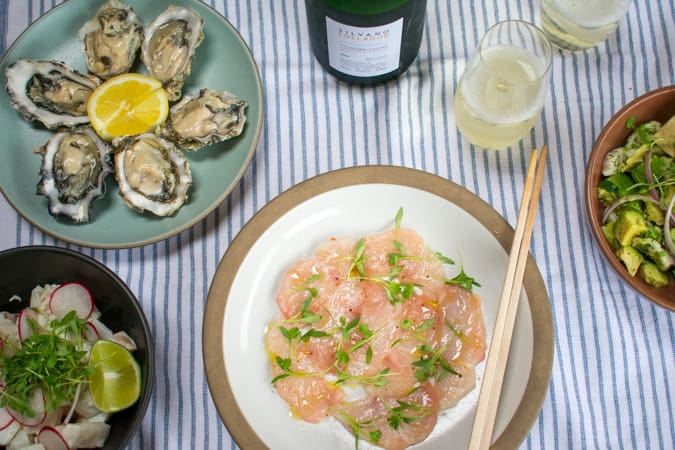




Carli D'Amato says
Would this also work with snapper?
asiantestkitchen@gmail.com says
Hi Carli! Yes, snapper would work, but be sure to slice it THIN. Snapper is chewier and tougher whereas hamachi is softer like butter.